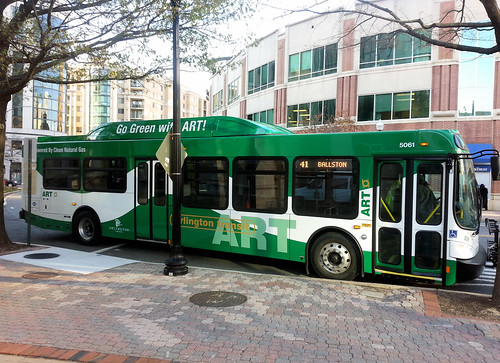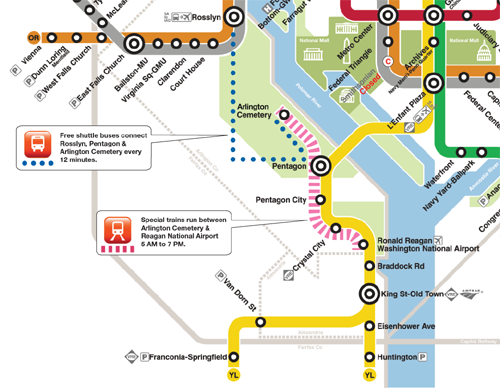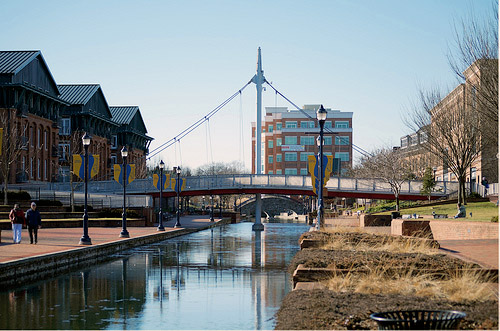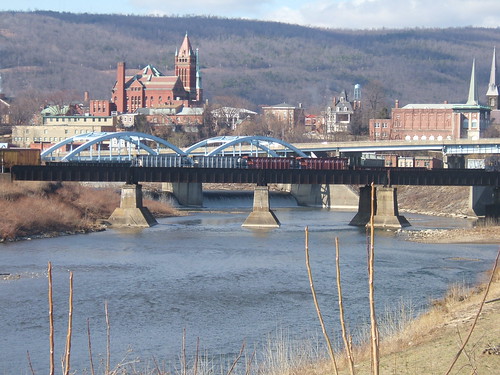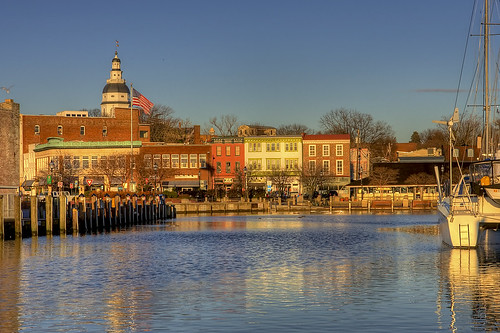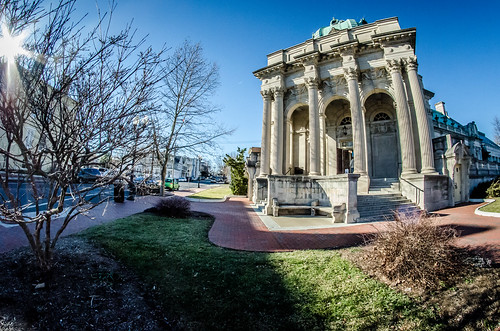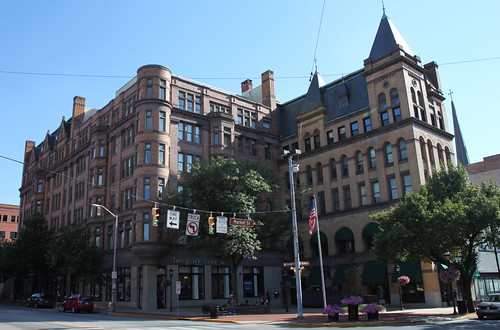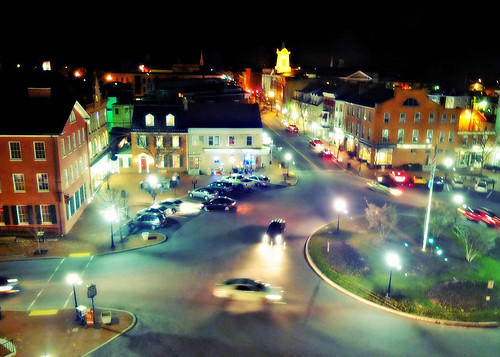|

Maryland Governor’s Mansion. Image from the Boston Public Library on Flickr. |
Despite years of work and broad community support to build the Purple Line, Maryland’s new Republican governor-elect may kill the project. Does Maryland’s heavily centralized state-level planning make it particularly susceptible to shifts like this one?
Most US states delegate transit planning to regional or municipal agencies, rather than doing it at the state level. Maryland is unusual. It’s geographically small and dominated by urban areas, and it has a history of governors interested in planning. So the state handles much more planning than usual, especially for transit.
That can be a mixed blessing.
When things go well, it means Maryland directs many more resources to transit than most other states. But it also means transit projects in Maryland are inherently more vulnerable to outside politics.
Maryland’s centralized system is designed under the assumption that Democrats will always control the state government, and therefore planning priorities won’t change very much from election to election. Were that actually the case, the system would work pretty well.
But recent history shows Maryland is not nearly so safe as Democrats might hope. With Larry Hogan’s election, two out of the last three Maryland governors have been Republicans. And they have different priorities.
Of course, it’s completely proper for political victors to have their own priorities. We live in a representative democracy, and we want it that way.
But shifting priorities are a big problem for any large infrastructure projects that take more than one governor’s time in office to complete.
It takes at least 10 years to plan and build something like a light rail line, or a new highway. If every new governor starts over, the project never gets done.
Thus, large infrastructure projects like the Purple Line, Baltimore’s light rail, and even highways like the ICC wallow in uncertainty for decades, shifting back and forth as one governor’s pet project and another governor’s whipping post.
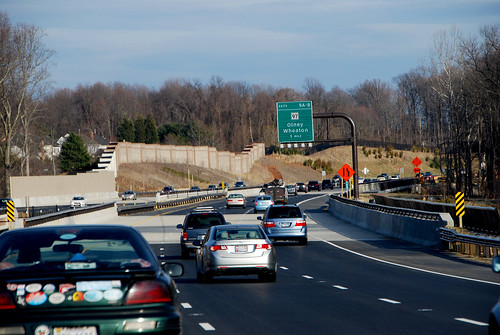
Maryland’s spent literally half a century debating and re-debating whether or not to build the ICC highway.
While many states centralize their planning for highways, so much money automatically flows towards highway expansion that a lot of big road projects inevitably sail through without becoming political issues. Since transit rarely has dedicated funding for long term expansion, transit projects are more likely to become politicized.
And although this problem can happen anywhere, Maryland’s particular system centralizing transit planning under the governor’s office seems to make it par for the course.
When regional or local agencies control more of the planning, they’re less susceptible to the whims of any individual election.
For example on the southern side of the Potomac, where Virginia kept Silver Line planning alive through multiple Democrat and Republican governors, but only managed to actually build it after the Metropolitan Washington Airports Authority took over ownership of the project from the state in 2007. After that, the state was involved but not the leader, making the project less of a target for governors or legislators.
Is there a best of both worlds?
The benefit to statewide planning is statewide resources. The Maryland Department of Transportation is much more willing to spend its own money on transit than almost any other state DOT.
While Fairfax County and MWAA had to increase local commercial property taxes and tolls in the Dulles Corridor to build the Silver Line, MDOT leadership meant Montgomery and Prince George’s weren’t supposed to need such schemes for the Purple Line.
Could we find a way to preserve access to the state’s financial resources without putting urban transportation projects at the mercy of voters on the Eastern Shore? Maybe.
Virginia offers a compelling model, with its regional planning agencies like the Northern Virginia Transportation Authority. NVTA makes decisions and receives funding at the metropolitan level, and is governed by a relatively stable board rather than one single politician.
Naturally the NVTA system has trade-offs too. For example, NVTA has independent funding streams but doesn’t get to allocate VDOT money. And NVTA is ultimately under jurisdiction of the Virginia General Assembly, which can impose its will any time.
No system is ever perfect, and Maryland wouldn’t have to copy Virginia directly. But something similar in concept might work, especially if it combined regional decision-making with state funding.
Don’t mistake Maryland’s problem as a criticism of planning in general
One common trope among some sprawl apologists and highway lobbyists is that central planning is inherently bad. For them, “central planning” is a code word that really means smart growth and transit planning in general.
Maryland’s reliance on statewide rather than regional-level planning does not prove those pundits right. Without government planning no large infrastructure projects would be possible at all.
Maryland has a specific problem with how it implements its planning, which leaders in the state can practically address without throwing the planning baby out with the bathwater.
Perhaps it’s time to begin that conversation.
 Cross-posted at Greater Greater Washington.
Cross-posted at Greater Greater Washington.
Average Rating: 5 out of 5 based on 261 user reviews.
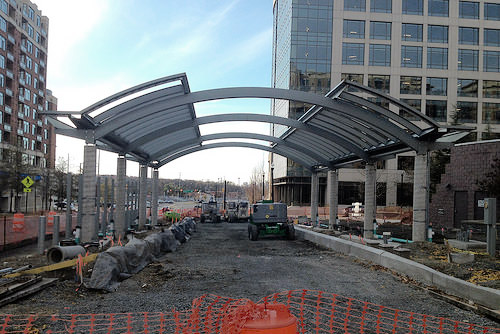
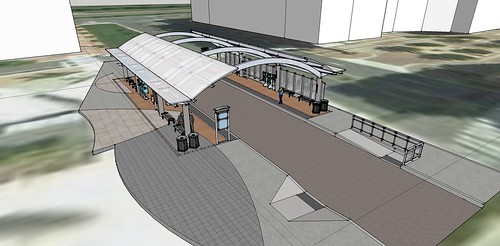
 Cross-posted at Greater Greater Washington.
Cross-posted at Greater Greater Washington.









